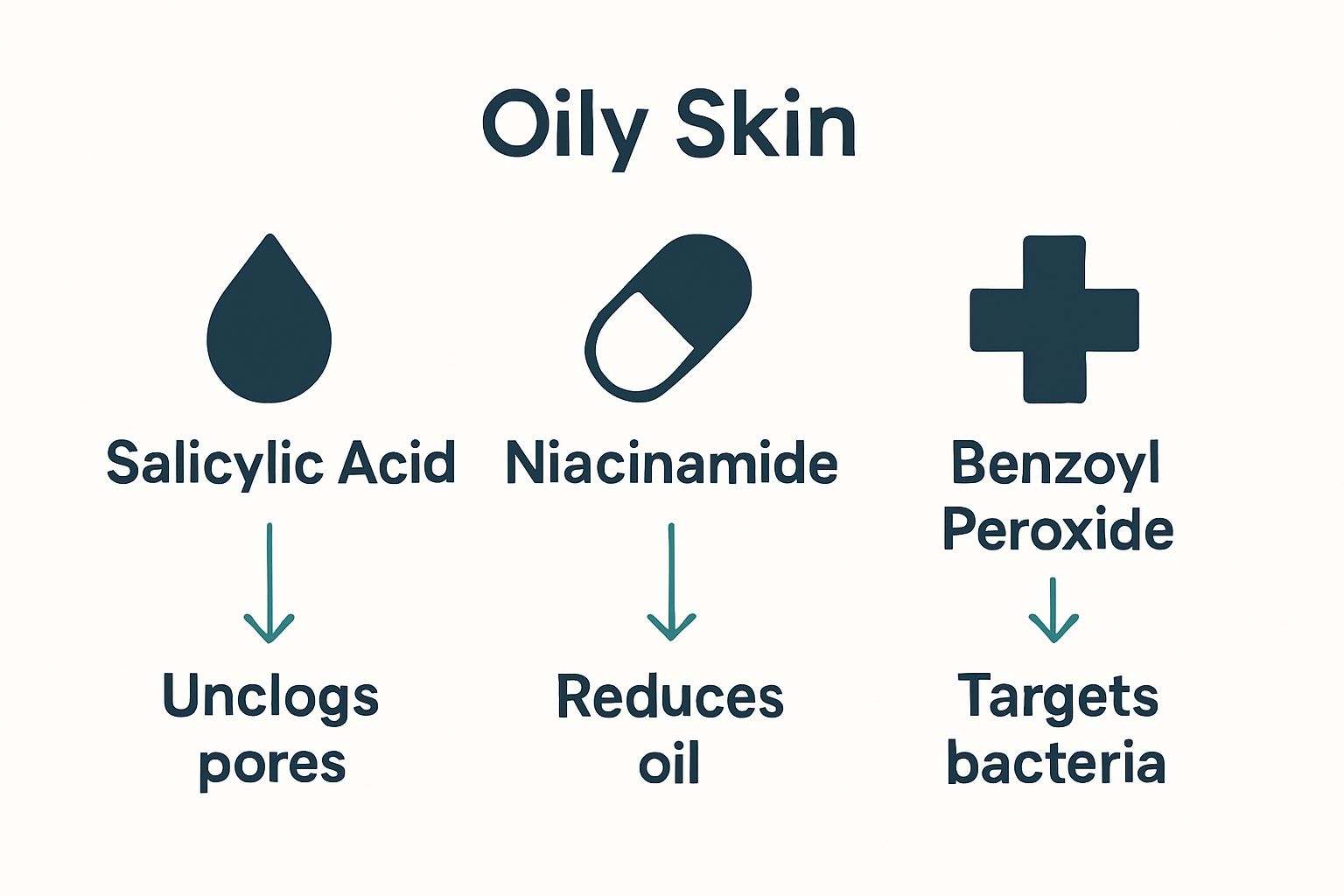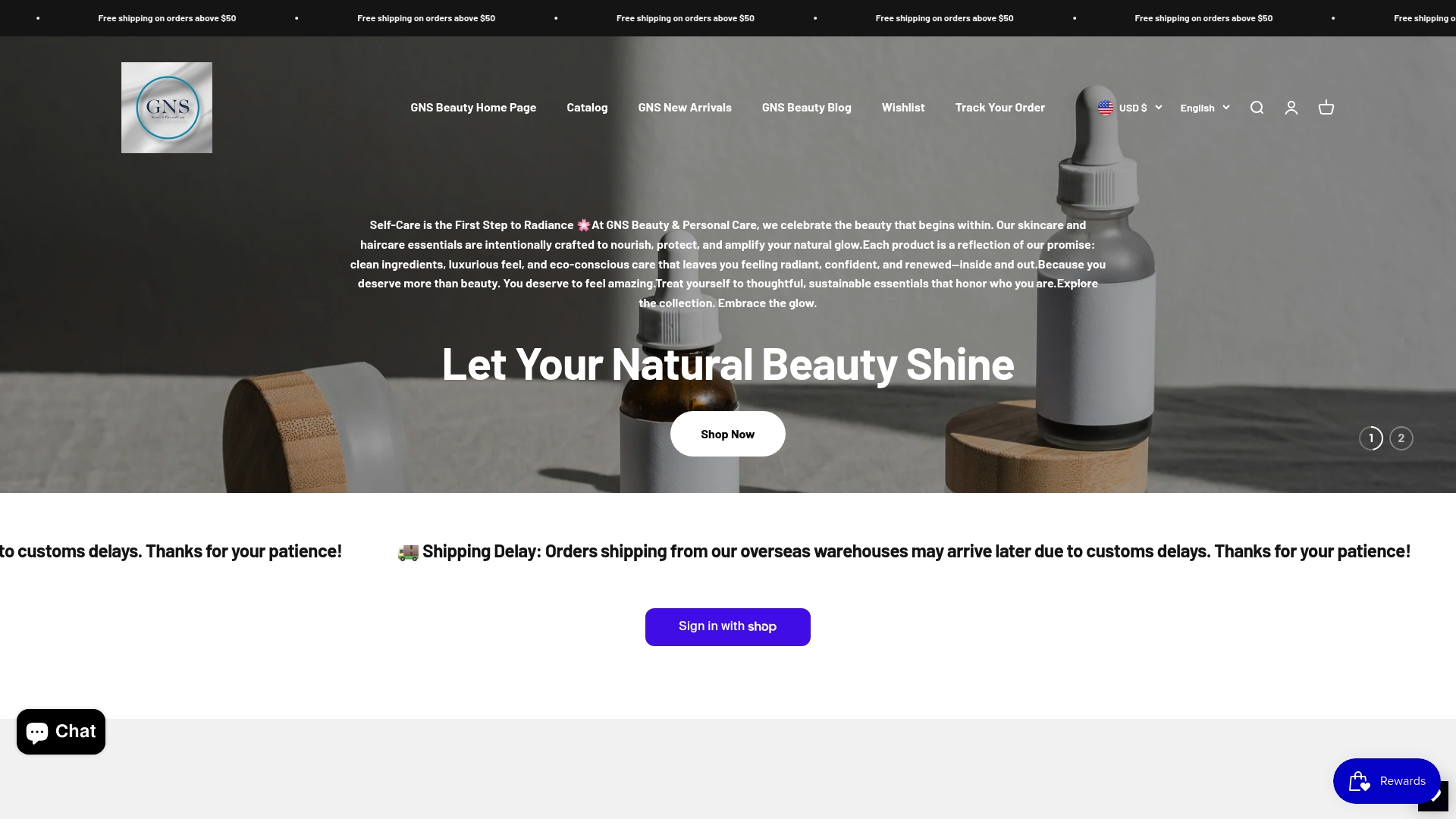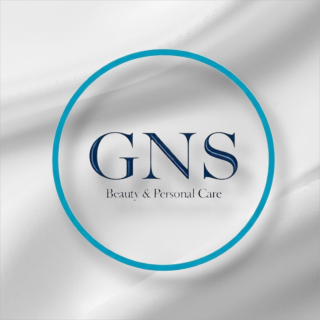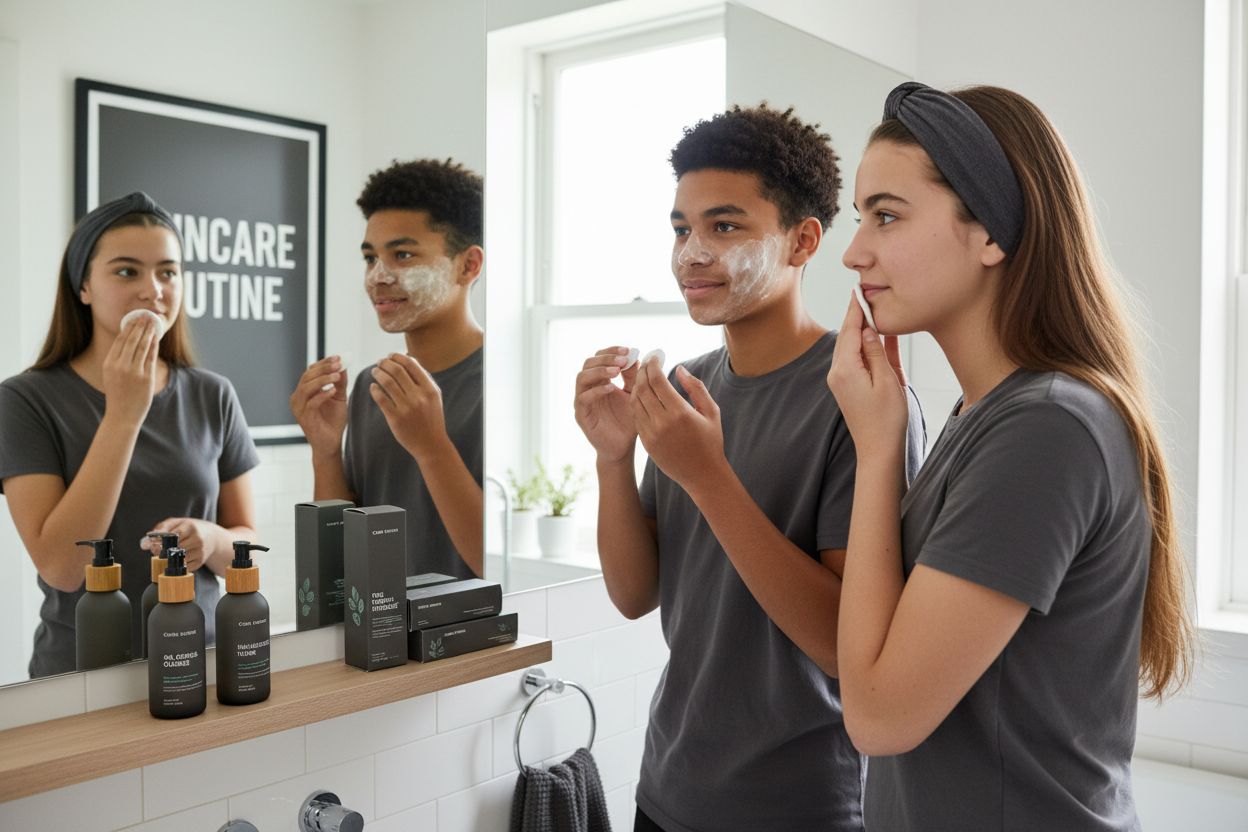Teen skin seems to change almost overnight and the extra shine often shows up around the same time as high school stress. Studies reveal that over 85 percent of teens experience oily skin due to puberty-fueled hormone shifts. Most people think the real problem is how much oil these glands pump out but oily skin actually serves a protective purpose and the real challenge is finding the right balance for skin health during these unpredictable years.
Table of Contents
- What Causes Oily Skin In Teens?
- Why A Proper Skincare Routine Matters
- How Skincare Products Work For Oily Skin
- Key Ingredients To Look For In Products
- The Role Of Lifestyle In Skincare Management
Quick Summary
| Takeaway | Explanation |
|---|---|
| Hormonal changes cause oily skin | Teenagers’ changing hormones increase oil production significantly. Understanding this can help manage their skincare approach. |
| Implement a targeted skincare routine | A consistent skincare regimen prevents acne and maintains skin health, teaching teenagers self-discipline and care. |
| Key ingredients for oily skin | Salicylic acid, niacinamide, and zinc PCA help control oil and acne formation effectively when chosen properly. |
| Lifestyle affects skin health | Factors like diet, hydration, and stress management are crucial for maintaining balanced skin and preventing excess oil. |
| Manage expectations and be patient | Oily skin is a natural part of development. Patience with skin changes can enhance overall skincare success. |
What Causes Oily Skin in Teens?
Teens experience significant hormonal changes during puberty that dramatically impact their skin’s oil production. These transformations can create challenging skincare scenarios that require understanding and strategic management.
Hormonal Surge and Sebum Production
Androgen hormones play a critical role in triggering excess sebum production during teenage years. Research from the National Institutes of Health confirms that increased androgen levels stimulate sebaceous glands to generate more oil than usual. This hormonal surge typically begins around age 12-14 and can continue through late teenage years.
Key factors contributing to increased oil production include:
- Genetic predisposition
- Puberty-related hormonal changes
- Increased testosterone levels
- Stress and emotional fluctuations
Biological Mechanisms Behind Oily Skin
The human body’s sebaceous glands become significantly more active during adolescence. These microscopic glands are located just beneath the skin’s surface and are responsible for producing sebum - a natural oil that helps protect and moisturize skin. However, during puberty, these glands can become overstimulated, leading to excessive oil production.
While excess oil might seem problematic, it serves a protective biological function. Sebum helps maintain skin barrier integrity, prevents excessive moisture loss, and provides some natural protection against environmental damage. The challenge emerges when this production becomes imbalanced, potentially leading to clogged pores and acne.
Understanding these biological mechanisms helps teens approach skincare with patience and strategic interventions, recognizing that oily skin is a natural developmental process rather than a personal failure.
Why a Proper Skincare Routine Matters
A consistent and targeted skincare routine is essential for managing oily teenage skin, addressing both immediate aesthetic concerns and long term dermatological health. Understanding the importance of systematic skin care can transform teenage experiences and prevent potential future complications.
Preventing Skin Complications
Research from the NHS indicates that neglecting regular skincare can worsen oily skin and increase the risk of clogged pores, leading to more frequent and severe acne outbreaks. Developing a proactive approach helps teenagers manage their skin’s unique challenges during hormonal transitions.
Key reasons a proper skincare routine matters include:
- Reducing excess sebum production
- Minimizing potential acne development
- Maintaining healthy skin barrier function
- Preventing long term skin damage
Building Confidence and Self Care Habits
Beyond physical health, establishing a skincare routine provides significant psychological benefits. Teenagers learn self discipline, develop personal care skills, and gain confidence through understanding and managing their skin’s unique characteristics. These routines become fundamental life skills that extend well beyond adolescence.

Moreover, a structured approach allows teens to explore essential morning skincare steps that can become lifelong wellness practices. By treating skincare as a form of self respect rather than a burdensome task, teenagers can transform their perspective on personal grooming and health management.
A targeted skincare routine serves as more than just a method of managing oily skin - it represents a holistic approach to personal development, physical wellness, and self understanding during a complex period of personal growth.
How Skincare Products Work for Oily Skin
Understanding how specialized skincare products interact with oily teenage skin requires insight into their unique chemical compositions and targeted mechanisms of action. These products are scientifically designed to balance oil production, reduce inflammation, and promote healthy skin renewal.
Active Ingredients and Their Functions
Research from the National Institutes of Health confirms that specific cleansers and exfoliants with targeted actives can help remove excess sebum and decrease bacteria contributing to acne formation. The most effective products focus on regulating sebum production without completely stripping the skin’s natural protective barrier.

Key active ingredients that work effectively for oily skin include:
- Salicylic acid (helps unclog pores)
- Niacinamide (regulates oil production)
- Benzoyl peroxide (reduces acne-causing bacteria)
- Hyaluronic acid (provides lightweight hydration)
Mechanism of Skin Interaction
Skincare products for oily skin operate through complex biochemical interactions. Mattifying ingredients work by absorbing excess oil, while non-comedogenic formulations prevent pore blockage. Ingredients like zinc and clay act as natural oil absorbers, creating a balanced skin environment without excessive dryness.
The goal is not to eliminate all skin oil but to manage its production. Gentle, targeted products help reset the skin’s natural equilibrium, reducing overcompensation by sebaceous glands. By providing balanced hydration and controlling bacterial growth, these products support the skin’s natural healing and regulatory processes.
Effective skincare for teens with oily skin represents a delicate science of understanding individual skin chemistry and providing precise, supportive interventions that promote long term skin health and confidence.
Key Ingredients to Look For in Products
Selecting the right skincare ingredients is crucial for managing oily teenage skin. Understanding the specific properties and benefits of different compounds can transform skincare from a confusing routine to a targeted, effective approach to skin health.
Pore-Clearing and Oil Control Ingredients
Dermatological research demonstrates that certain ingredients can specifically target excess oil production and prevent acne formation. Scientifically validated ingredients offer precise mechanisms for managing teenage skin challenges.
Key ingredients that effectively address oily skin concerns include:
- Salicylic acid (beta hydroxy acid)
- Niacinamide (vitamin B3)
- Zinc PCA
- Green tea extract
- Witch hazel
Understanding Ingredient Effectiveness
Not all ingredients work identically for every skin type. Salicylic acid, for example, penetrates oil glands and helps exfoliate internally, while niacinamide regulates sebum production at a cellular level. Lightweight, non-comedogenic formulations are essential to prevent further pore blockage.
Teens can learn more about clean beauty approaches that prioritize gentle, effective ingredients. The goal is finding products that balance oil control without stripping the skin’s natural protective barrier.
Here is a feature table outlining the primary ingredients recommended for oily teenage skin and their key functions. This helps teens and parents quickly compare the benefits of each ingredient.
| Ingredient | Main Function | Additional Benefit |
|---|---|---|
| Salicylic acid | Unclogs pores, exfoliates | Targets acne, reduces inflammation |
| Niacinamide | Regulates oil production | Calms redness, strengthens barrier |
| Zinc PCA | Controls sebum, soothes skin | Supports wound healing |
| Benzoyl peroxide | Reduces acne-causing bacteria | Fights breakouts |
| Green tea extract | Anti-inflammatory, antioxidant | Calms irritation |
| Witch hazel | Mild astringent | Minimizes appearance of pores |
| Hyaluronic acid | Lightweight hydration | Maintains moisture balance |
Choosing skincare products is a nuanced process that requires understanding individual skin characteristics, ingredient interactions, and personal skin chemistry. Patience, experimentation, and professional guidance can help teenagers develop an effective, personalized skincare strategy.
The Role of Lifestyle in Skincare Management
Skincare for teens with oily skin extends far beyond topical treatments and product selection. A holistic approach recognizes that lifestyle factors significantly impact skin health, creating a comprehensive strategy that addresses internal and external influences on skin condition.
Nutrition and Skin Health
Nutritional research demonstrates a direct correlation between diet and skin inflammation. What teenagers consume plays a critical role in managing sebum production and overall skin quality. Dietary choices can either exacerbate or mitigate oily skin challenges.
Key lifestyle factors influencing skin health include:
- Hydration levels
- Sleep quality and duration
- Stress management
- Dietary composition
- Physical activity
Stress and Hormonal Balance
Stress triggers hormonal responses that directly impact sebaceous gland activity. When teenagers experience heightened stress, cortisol levels increase, potentially stimulating additional oil production. Mindfulness practices and emotional regulation become crucial components of skincare management.
Teens can explore holistic skincare approaches that integrate emotional well-being with physical skincare strategies. Understanding the interconnected nature of lifestyle and skin health empowers teenagers to make informed choices that support their overall wellness.
Effective skincare management requires a multifaceted approach that considers physiological, nutritional, and psychological factors.
This comparison table summarizes key lifestyle factors that affect oily skin in teens and explains how each influences skin health, making the connection between habits and outcomes more clear.
| Lifestyle Factor | How It Affects Oily Skin |
|---|---|
| Hydration | Supports optimal oil balance and skin barrier |
| Sleep quality | Aids hormonal balance; reduces inflammation |
| Stress management | Lowers cortisol, helping control sebum |
| Dietary composition | Nutrient-rich diets limit inflammation |
| Physical activity | Promotes circulation and balanced hormones |
| By recognizing the complex relationship between lifestyle and skin health, teenagers can develop sustainable strategies that promote both external appearance and internal balance. |
Take Control of Oily Teenage Skin with GNS Beauty
Managing oily skin as a teen can be frustrating. You already deal with hormonal changes, excess sebum, and breakouts. Standard routines often leave your skin feeling stripped or greasy, while the wrong products can actually make oiliness and acne worse. This article showed how a balanced, effective skincare approach—one that uses proven ingredients like salicylic acid and niacinamide and prioritizes gentle care—makes all the difference in both appearance and self-confidence.

Why settle for trial and error? At GNS Beauty & Personal Care, you can choose from clean, science-backed products designed for real, long-term results. Explore our beginner’s guide to clean beauty to discover how natural formulas work to help manage oily skin every day. Ready for visible improvement and a boost in confidence? Visit GNS Beauty & Personal Care now and experience a smarter way to care for your skin.
Frequently Asked Questions
What causes oily skin in teens?
Oily skin in teens is primarily caused by hormonal changes during puberty, particularly increased androgen levels, which stimulate sebaceous glands to produce more sebum. Genetic predisposition, stress, and emotional fluctuations can also contribute to increased oil production.
How can a proper skincare routine help with oily skin?
A proper skincare routine is essential for managing oily skin as it helps reduce excess sebum production, minimizes acne development, maintains healthy skin barrier function, and prevents long-term skin damage. It also promotes self-discipline and confidence in managing personal care.
What skincare ingredients should I look for if I have oily skin?
Key ingredients for oily skin management include salicylic acid, niacinamide, zinc PCA, green tea extract, and witch hazel. These components help regulate oil production, unclog pores, and reduce inflammation while maintaining skin hydration.
How does lifestyle impact oily skin management?
Lifestyle factors such as hydration, diet, sleep quality, stress management, and physical activity can significantly affect skin health. Proper nutrition and stress reduction techniques can help balance hormone levels and sebum production, leading to better skin management.








Leave a comment
All comments are moderated before being published.
This site is protected by hCaptcha and the hCaptcha Privacy Policy and Terms of Service apply.